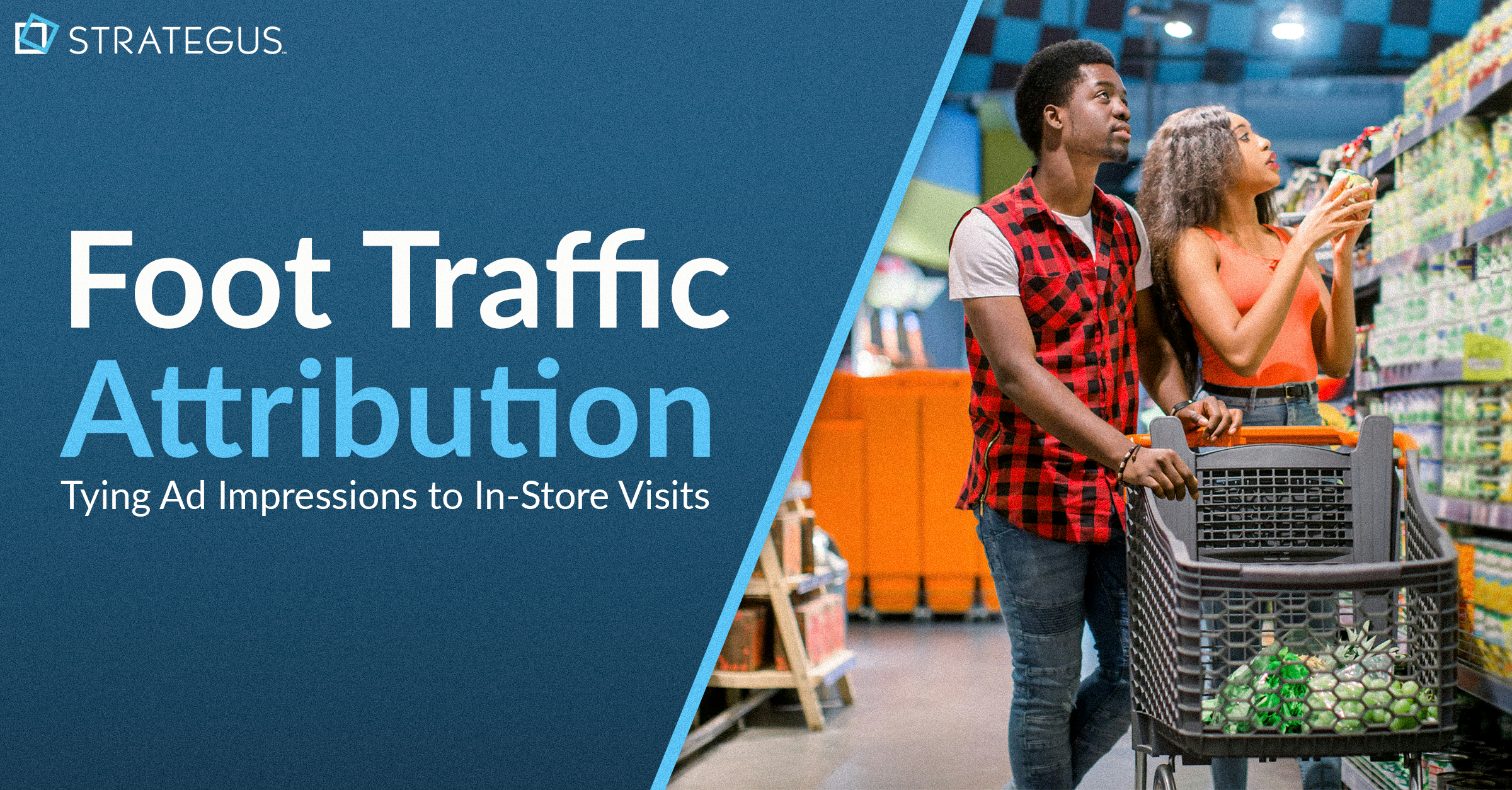- Home
- Strategus Blog
- Why Some Marketers Don't Trust CTV
Why Some Marketers Don't Trust CTV
 Andy Dixon
Andy Dixon
4 minutes read

Although CTV advertisers' expenditure is expanding considerably, it faces challenges due to inventory fragmentation, a lack of defined measures, frequency restrictions, and advertising fraud. There has been some recent discussion in the industry regarding trust issues in the CTV advertising industry. We understand some searching for answers to reach consumers further but have developed trust issues with CTV companies. Strategus is here to help.
An ad buyer contemplating linked TV can purchase from a variety of sources, including streaming device manufacturers, content aggregators, smart TV manufacturers, broadcast networks, and programmatic ad exchanges. This implies that the ad inventory is dispersed, so it is difficult for individual providers or channels to achieve the scale that marketers are used to with traditional TV. So, what is the best method for marketers to approach this problem? By demanding inventory accountability from your CTV provider through full transparency.
What is the difference between OTT and CTV advertising?
Connected TV advertising (CTV) involves advertising targeting millions of viewers that watch television but not merely the traditional linear TV channels as a medium. Television advertising is based on interest, demographic information, geographical information, and targeting particular devices or applications. Over-the-top (OTT) advertisements are a form of ad-sense delivered through the Internet through streaming devices like televisions, apps, and technology like Roku devices and even websites run by traditional video channels. They could be videos filmed or ads that appear immediately after a TV program ends.
The right message, the right person at the right time on every device
Many agencies have the expertise in creating and running CTV advertising campaigns for brands, but many don't know the basics. Often, businesses are simply trying to run the same creative resources from TV advertisements on connected televisions without the capabilities offered. This lack of complete understanding of how most advanced tv advertisers operate regarding connected TVs and streaming services creates mistrust.
Why is trust an issue in digital advertising?
In the early days of TV ads, a company was satisfied with basic demographics. But with advanced tv marketing data and people being used to hyper-targeted ads from places like Google and Facebook, CTV advertisers demand more data to help secure consumer attention. In one March 2019 study of 350 marketers in the USA performed by the Interactive Advertising Bureau and Advertiser Perceptions, there was 27 percent of those polled stated that insufficient campaign measurement is the most significant barrier to spending more on over-the-top (OTT) video commercials. This was only second to cost. So, suppose marketers want to trust CTV to deliver messages to consumers. In that case, they need to create better access to research and data on what consumers are watching and engaging with. In short, some marketers still don't trust CTV.
How can CTV providers gain marketer trust?
This answer is relatively simple: by building trust and transparency. Over the years, digital marketers have worked with companies like Google, Facebook, and Twitter and have seen trust broken on multiple occasions. Often, this is a result of a lack of transparency.
The four pillars of Connected TV advertising trust
Big data builds trust with marketers. Marketers and their data science teams can draw the connections between the time/date stamp of an ad displayed and the order ID with sufficient access to vast, well-structured data sets on completely transparent platforms.
While extreme openness is vital in gaining trust with sophisticated marketers, other critical parts of building trust are needed.
Success should be measured by performance marketers
Just because you believe your consent terms are complete does not imply your users do. One of the most critical components of a consent management program is optimizing it to increase opt-ins over time.
Consent management software will continually collect crucial data sets for you to track opt-in rates. You may test templates, layouts, content, CTAs, text, and design several times to determine whether you can connect with people and earn their opt-ins.
Transparency to the extreme
Marketers' data science teams must examine every component of campaign data for themselves, including event-log-level time/date stamps for each impression, media cost, and data cost. Accordingly, they must assess their data management, data analysis platforms and decide which of them best meet their needs.
Campaign data science team members must work with campaign management and data scientists from the client's marketing analytics department. The marketing analytics team should be the most knowledgeable of the campaign's various components.
The analytics team's objective is to create the campaign's target audience segmentation or profiles. The team must choose which metrics will best support the campaign's objectives.
Total platform control and flexibility
Typically, growth teams for performance marketers have their ideas about how attribution should operate. New CTV channels must provide complete flexibility on critical attribution process components such as the attribution window itself, the weight/value of each advertising touchpoint, insight into which apps to purchase, and the ability to export data into first- or third-party measurement platforms or downloadable from your website. Allowing control is a sign of building more trust.
Scale your CMP to mobile and CTV
You must get consent to collect user data if you use mobile, OTT, or CTV platforms just like on a website. It's not difficult if you've set up a consent management platform. You can implement a uniform and one-time consent procedure across all media. Total platform flexibility and control to help sell.
Growth teams for performance marketers typically have ideas about how attribution should operate. New CTV platforms must provide complete flexibility on critical components of the attribution process, such as the attribution window itself, the weight/value of each advertising touchpoint, insight into which apps to buy, and the ability to export data into first- or third-party measurement platforms.
A focus on last-click attribution
There are two types of attribution models: first-touch and last-touch. The first-touch model assumes that the client purchases after seeing the first advertisement, whereas the final-touch model assumes that the customer converts after the last advertisement. CTV must be capable of driving clients to participate in second-screen activities, which means that the "last click" inspired by a TV ad will come from a channel other than TV, such as Google search, social Facebook or Twitter ads, or direct type-in traffic, and an ability to seamlessly track the sales.
What can we learn about trust in CTV?
When marketers begin to believe the facts and understand that a channel is producing ROAS, they will start to invest in it at a large scale. Platforms become an enabling, trusted technological partner to marketers, with the comprehensive alignment of incentives. And, after 70 years of panel-based TV measurement that appears archaic in comparison to digital advertising, nothing less than this new trust model will win over CTV marketers.
We at Strategus guarantee brand safety. We can help mitigate that fear through our expertise, know-how, and understanding of your needs. Strategus pioneered the first programmatic campaign. This puts us at a natural advantage over the competition, so we put trust and data transparency as our priority with every campaign.

Andy Dixon is a seasoned Content Writing Specialist at Strategus, renowned for his expertise in creating engaging and impactful digital content. With over a decade of experience in content creation, Andy has honed his skills in a variety of niches, ranging from technology and marketing to education.
Strategus is a managed services connected TV(CTV) advertising agency with over 60,000+ campaigns delivered. Find out how our experts can extend your team and drive the result that matter most.
Talk to an Expert
Seeking a Custom CTV Strategy That Delivers?
What to read next

Third-Party Data Targeting for CTV: Benefits & Tactics
Third-party data. It’s a term that’s thrown around, and yet few take the time to detail its pros and cons — much less strategies for using...
7 minutes read

First-Party Data Targeting: Benefits and Tactics for CTV Advertising
First-party data is the information that companies collect directly from their customers rather than through intermediaries. Advertisers use this...
10 minutes read

Foot-Traffic Attribution: Tying Ad Impressions to In-Store Visits
The marketing funnel has changed. Today’s shoppers often begin researching products from the comfort of their homes and don’t set foot into a store...
8 minutes read

CTV Attribution: What It Is and How It Works
Connected TV (CTV) viewing is on the rise — and that’s good news for marketers. Not only can CTV ads be precisely targeted to individual households,...
9 minutes read















